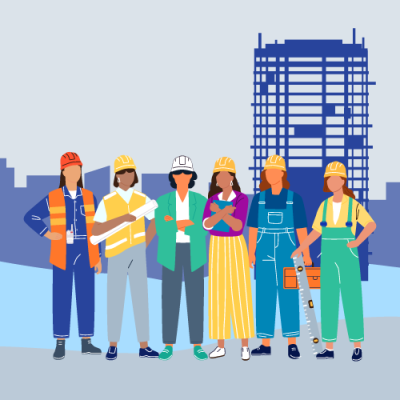Job Hazard Analysis
Friday, June 21, 2019 Ariana Naumovski
Job Hazard Analysis, commonly referred to as a Job Safety Analysis, often intimidates many employees and management alike. That’s because they don’t truly understand the purpose and the process of a Job Hazard Analysis. This article will hopefully help debunk the intimidating factors of a Job Hazard Analysis (JHA) and get you the necessary information needed to successfully conduct a JHA.
A Job Hazard Analysis is a breakdown of a job/task into steps to identify what hazards are associated with it, and what the potential and severity of a possible accident are. This in turn helps companies implement the best controls for the hazards and reduce the risk of injury or illness from occurring. When fewer accidents and injuries occur, compensation costs decrease and worker productivity increases, just to name a few advantages. JHAs’ also help with training employees to do the job safely. But most importantly, a JHA evaluates the risk of hazards in regard to the employee(s), the task, the tools, and the work environment.
A JHA is typically done when:
- A new job is added to operation
- A job or process change
- An accident, injury, or illness has occurred
- Task with a statistically high rate of injury or illness
It’s important to note that successful and safe companies don’t just stop there; they conduct JHA’s for every job they have. This ensures a more proactive approach to safety rather than reactive. You will however want to start with the jobs that have the greatest risk of accident or injury.
Successful JHA’s are going to include people from all levels within an organization. This means that the employees who are performing the job task will be involved along with management; it’s a group effort. Once you have your JHA team assembled, the team will then review accident history, looking at near misses, injuries, and illnesses that required treatment or lost time. Reviewing this history will show that current controls may need to be revised to provide better safety.
Next, the team will prioritize the jobs from the most hazardous that are an immediate danger to employees or have the highest likelihood for happening to those with a lower risk of accident/injury. Once the jobs have been prioritized, you will break down each job into steps or tasks. You want to make sure you get enough detail to be able to fully evaluate and identify the hazards, but not too detailed where it becomes too long and unnecessary. A good option to help with the process would be to videotape or photograph employees while they are doing the job to see exactly how they do the job with the tools, resources, and environment. This plays a role in the job and hazard risk. Just reiterate to employees that this is only for the JHA and not about their performance.
Once you have the steps of your job outlined, you are going to look at them to identify any hazards. Occupational hazards can be broken down into four main categories: Biological, chemical, physical, and ergonomic. Your risk analysis is done by answering the following questions:
- What can go wrong?
- How will it go wrong?
- Where is it happening?
- What are the consequences?
- What is the likelihood it will occur?
- Are there other contributing factors?
Don’t be afraid to come up with more questions to answer to help you better identify the hazards that exist within your specific jobs.
A JHA is only successful if you actually do something with your concluding information; that is, you have to correct or prevent the hazards that you have identified. This will be done by taking a look at The Hierarchy of Controls. Take each hazard that exists and establish your control(s), working from the top of the hierarchy to the bottom.

After you have your control measure in place, you want to analyze its effectiveness by establishing, which for several tasks, already have a safe limit which was designated by organizations such as ACGIH. All affected employees should be trained on the potential hazards that were identified by the JHA and the planned control measures that will help mitigate them. Finally, the JHA team should review the Job Hazard Analysis’ periodically to ensure its effectiveness and accuracy and if a near-miss, accident, injury, or illness occurs, restart the cycle of a JHA again.

Job Hazard Analysis’ are a great tool for organizations to be proactive when it comes to safety. Involving all levels within an organization will help with the accuracy of the JHA and increase the cooperation of everyone involved when it comes time for implementing a resolution. The benefits will be worth the time and the effort of the process.
Sources:




.jpg)